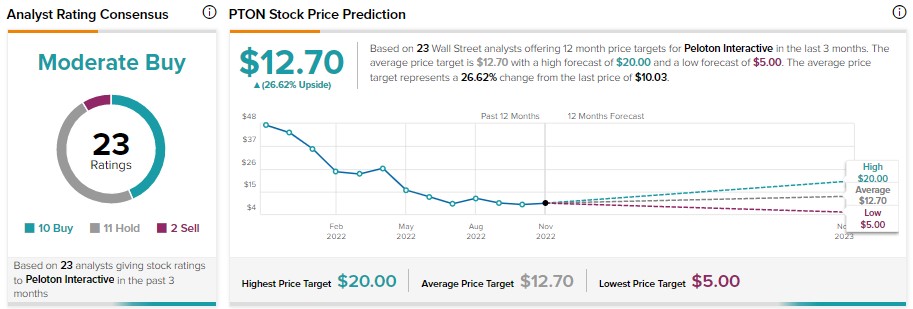Shares of the beleaguered fitness-at-home equipment maker, Peloton (NASDAQ:PTON), have gained about 37% in one month. However, the uncertainty over demand trends and pressure on margins could restrict the upside.
The moderation in demand following the economic reopening, a slowdown in subscription growth, inventory issues, and pressure on margins took a toll on PTON stock. It has lost about 72% year-to-date. However, the company’s turnaround efforts are gaining ground, supporting the recovery in its share price.
One of the critical efforts is expanding its distribution channel, which would reduce inventory. PTON partnered with Amazon (NASDAQ:AMZN), which the company said has outperformed expectations. However, management also warned that its broadened retail strategy would come at the cost of margins.
Robert W. Baird analyst Jonathan Komp, who is bullish about PTON stock, said that the company’s initiatives to stabilize the business and drive growth are “showing early promise” with “Amazon attracting incremental customers.”
Citing PTON’s valuation, KOMP said that his price target of $14 reflects a target EV/EBITDA multiple of 18X on his estimated FY24 “adjusted EBITDA ex SBC of $350 million.” The analyst added that this represents “a premium to the 14X average for a range of higher-growth digital content and platform companies.” However, the analyst believes that PTON’s valuation is justified due to his positive outlook and “profitable subscription business combined with restructuring efforts.”
What is the Prediction for Peloton Stock?
Wall Street is cautiously optimistic about Peloton stock. It has received 10 Buy, 11 Hold, and two Sell recommendations, resulting in a consensus rating of Moderate Buy. Meanwhile, analysts’ average price target of $12.70 implies 26.6% upside potential.

Importantly, hedge funds have been buying the dip in PTON stock. Our data shows that hedge funds bought 10.8M PTON stock last quarter. However, PTON stock has a Smart Score of four, implying a Neutral outlook.
Bottom Line
While the company’s efforts to stabilize the business, reduce costs and inventory, and drive growth are positives, uncertainty over future demand and continued pressure on margins could limit the recovery in the near term.
















